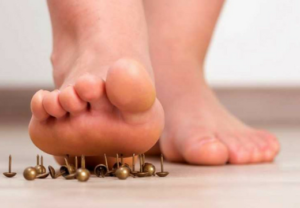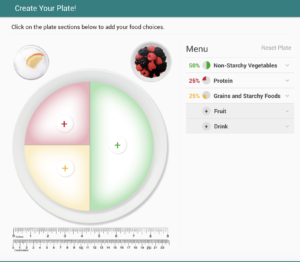08 May Diabetic Nerve Pain: Symptoms, Causes and How to Make Smart Food Choices to Control It
 Understanding how the food and drinks you consume affect your blood sugar level can help you manage one of the most common complications from uncontrolled diabetes: peripheral neuropathy pain. Symptoms include tingling, burning, sensitive to the touch, numbness/weakness or a cold sensation either in the feet or hands, according to the American Diabetes Association (ADA).
Understanding how the food and drinks you consume affect your blood sugar level can help you manage one of the most common complications from uncontrolled diabetes: peripheral neuropathy pain. Symptoms include tingling, burning, sensitive to the touch, numbness/weakness or a cold sensation either in the feet or hands, according to the American Diabetes Association (ADA).
What is diabetic neuropathy (diabetic nerve pain)?
Diabetic neuropathy, also called diabetic nerve damage, is term used to describe damage done to the nerves when blood sugar (blood glucose) level are too high for too long. If your blood sugars run much higher than 200mg/dl too often, you may be doing damage to the nerves in your hands and feet.
Imagine there’s a sheet of metal out in the rain for a long time. After a while, it will begin to rust. The metal sheet represents your nerves, the water represents high amount of sugar in your blood and the rust represents the damage done to your nerves by the water. Once the metal rusts, it’s hard to reverse that process. However, you can make choices now that will help prevent further damage to your nerves and may help to manage the pain.
How can I better manage my diabetic nerve pain?
1. Mind your medications. Take ALL diabetic medications your doctor has prescribed at the recommended times and dosages.
2. Manage what you eat. Certain foods you eat [or don’t eat] can affect your blood sugar. So, make sure to monitor your diet and control the amount of sugars (carbohydrates) you consume each meal.
How do I control my carb consumption and better manage my blood sugar?
One key to managing blood sugars through diet is to consume carbohydrates in moderation. Yet, it is important to remember not to avoid carbohydrates altogether, as our bodies run off the energy provided by them. Just be mindful that some carbohydrates are “better” than others because they provide fiber and/or protein to help slow down digestion.
Eat MORE of these complex carbohydrates:
• Beans [add more beans into your diet with our recipes for Burrito Bowls and Cowboy Caviar]
• Dairy
• Oatmeal [try this simple and scrumptious recipe for Overnight Oats]
• Fruits such as bananas, blueberries, cantaloupe, pears and strawberries
• Whole grain bread and whole wheat pasta
• Spinach
• Sweet potatoes
• Quinoa
Eat LESS of these sugary carbs:
• Candy, candy bars and ice cream
• Pastries, cupcakes, cookies and most other baked goods
• Refined white bread and pasta and white rice
• Cola and other sugar-sweetened beverages
Remember, keep your total carbohydrates to between 15-30 grams per SNACK and 45-60 grams per MEAL. When “counting” carbs, measure per meal instead of the total for the day.
QUICK TIP: Add a source of protein to each meal or snack for more energy and to help keep you feeling fuller longer.
 Need more help?
Need more help?
Use the ADA’s cool new interactive tool, My Plate, as a simple and effective way to manage your blood glucose levels and lose weight.
 For more information on The Pain Management Group, please visit thepainmanagementgroup.com or schedule an appointment at one of our locations throughout Middle Tennessee.
For more information on The Pain Management Group, please visit thepainmanagementgroup.com or schedule an appointment at one of our locations throughout Middle Tennessee.
We are committed to providing individualized care and vow to treat each patient with compassion and respect, never turning anyone away. Our physicians are fellowship-trained pain specialists who utilize a combination of interventional procedures and medication management services to tailor a personalized care plan for each patient’s long-term pain relief.




